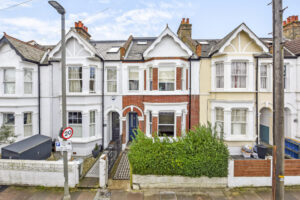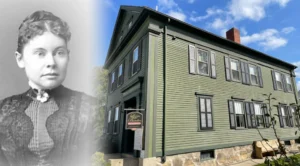The Victorian house is one of the most recognizable architectural styles, characterized by its ornate details, intricate designs, and historical significance. These homes originated during the reign of Queen Victoria (1837–1901) and reflect the grandeur and elegance of that era. From their steep gabled roofs to their decorative trim, Victorian houses remain a symbol of opulence and craftsmanship.
The History of Victorian Houses
Victorian houses emerged in the 19th century during the Industrial Revolution. Advancements in technology allowed for mass production of intricate architectural elements, making these homes more accessible to the rising middle class. The style gained popularity in the United Kingdom and later spread to the United States, Australia, and other parts of the world.
Key Characteristics of a Victorian House
Victorian houses are known for their unique and extravagant features, which set them apart from other architectural styles. Some of the key characteristics include:
- Elaborate Exteriors: Victorian houses often feature intricate woodwork, decorative trims, and patterned shingles.
- Steep Roofs: Gabled or mansard roofs with steep pitches add to the dramatic appearance.
- Large Bay Windows: Many Victorian homes have large bay or bow windows to maximize natural light.
- Ornate Interiors: Inside, these homes boast high ceilings, intricate moldings, and grand staircases.
- Asymmetrical Facades: Unlike modern symmetrical designs, Victorian homes often have varied rooflines and irregular shapes.
Different Types of Victorian Houses
There are several substyles of Victorian houses, each with its own unique characteristics:
Gothic Revival Victorian House
Gothic Revival Victorian homes are inspired by medieval European architecture. They feature pointed arches, turrets, and intricate woodwork.
Italianate Victorian House
Italianate Victorian houses have a more classical look, with flat roofs, tall windows, and decorative brackets under the eaves.
Queen Anne Victorian House
The Queen Anne style is perhaps the most famous, known for its turrets, wraparound porches, and a mix of different textures and materials on the facade.
Second Empire Victorian House
This style is characterized by mansard roofs, dormer windows, and elaborate ornamentation, inspired by French architecture.
Stick Style Victorian House
Stick-style Victorian houses emphasize structural elements, featuring wooden beams and exposed framework as decorative elements.
Victorian House Interior Design
The interior of a Victorian house is just as impressive as its exterior. Common interior design elements include:
- Elaborate wallpaper with floral and damask patterns
- Heavy draperies and lace curtains
- Antique wooden furniture with detailed carvings
- Chandeliers and gas or electric light fixtures
- Fireplaces with decorative mantels
Why Victorian Houses Remain Popular
Despite being over a century old, Victorian houses continue to attract homeowners and architecture enthusiasts. Some reasons for their enduring appeal include:
- Historical Charm: The unique craftsmanship and rich history make these homes highly desirable.
- Architectural Beauty: The intricate detailing and variety of styles create visually stunning homes.
- Spacious Layouts: Many Victorian houses were built with multiple rooms and large living spaces.
- Customization Potential: These homes allow for extensive renovations while maintaining their classic charm.
Restoring and Maintaining a Victorian House
Owning a Victorian house requires proper maintenance and restoration to preserve its beauty and structural integrity. Here are some tips:
- Preserve Original Features: Maintain original woodwork, stained glass windows, and decorative moldings.
- Use Period-Appropriate Colors: Many homeowners opt for historically accurate color palettes when painting their exteriors.
- Upgrade Utilities Carefully: Modernizing plumbing and electrical systems should be done without compromising historical elements.
- Repair Instead of Replace: Whenever possible, restore original doors, flooring, and fixtures instead of replacing them with modern alternatives.
Victorian Houses in Modern Times
Today, Victorian houses serve various purposes beyond being private residences. Some have been converted into:
- Bed and Breakfasts: Offering a unique, historical lodging experience.
- Museums: Preserving historical significance and educating visitors.
- Boutique Shops: Housing specialty stores and small businesses.
- Office Spaces: Providing an elegant setting for businesses and law firms.
Conclusion
The Victorian house remains a timeless piece of architectural history, admired for its grandeur, intricate details, and historical value. Whether you are a homeowner looking to restore a Victorian property or an architecture enthusiast fascinated by its legacy, these homes continue to captivate and inspire. Their charm, elegance, and craftsmanship ensure that Victorian houses will always hold a special place in architectural history.






